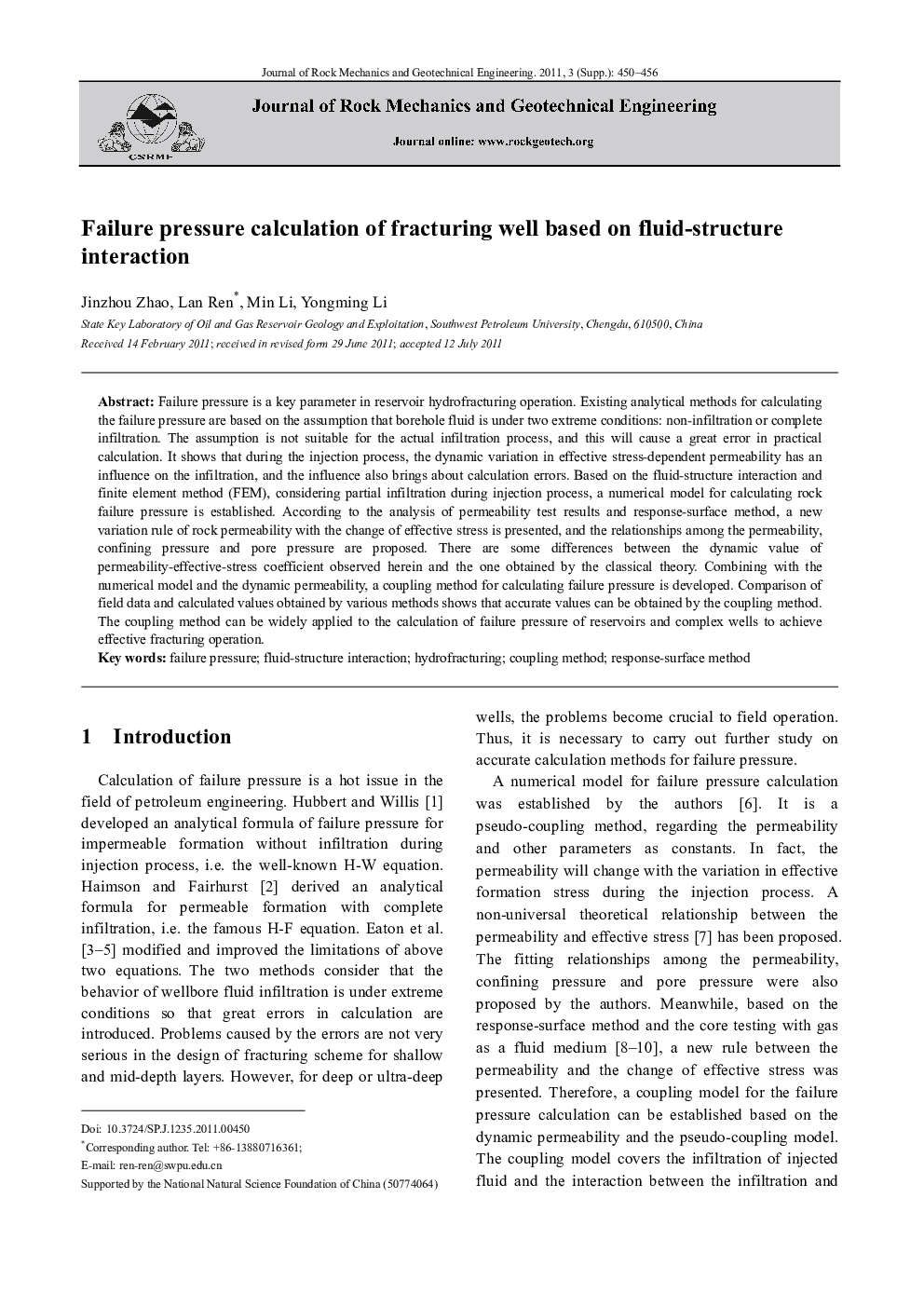| Article ID | Journal | Published Year | Pages | File Type |
|---|---|---|---|---|
| 286857 | Journal of Rock Mechanics and Geotechnical Engineering | 2011 | 7 Pages |
Failure pressure is a key parameter in reservoir hydrofracturing operation. Existing analytical methods for calculating the failure pressure are based on the assumption that borehole fluid is under two extreme conditions: non-infiltration or complete infiltration. The assumption is not suitable for the actual infiltration process, and this will cause a great error in practical calculation. It shows that during the injection process, the dynamic variation in effective stress-dependent permeability has an influence on the infiltration, and the influence also brings about calculation errors. Based on the fluid-structure interaction and finite element method (FEM), considering partial infiltration during injection process, a numerical model for calculating rock failure pressure is established. According to the analysis of permeability test results and response-surface method, a new variation rule of rock permeability with the change of effective stress is presented, and the relationships among the permeability, confining pressure and pore pressure are proposed. There are some differences between the dynamic value of permeability-effective-stress coefficient observed herein and the one obtained by the classical theory. Combining with the numerical model and the dynamic permeability, a coupling method for calculating failure pressure is developed. Comparison of field data and calculated values obtained by various methods shows that accurate values can be obtained by the coupling method. The coupling method can be widely applied to the calculation of failure pressure of reservoirs and complex wells to achieve effective fracturing operation.
